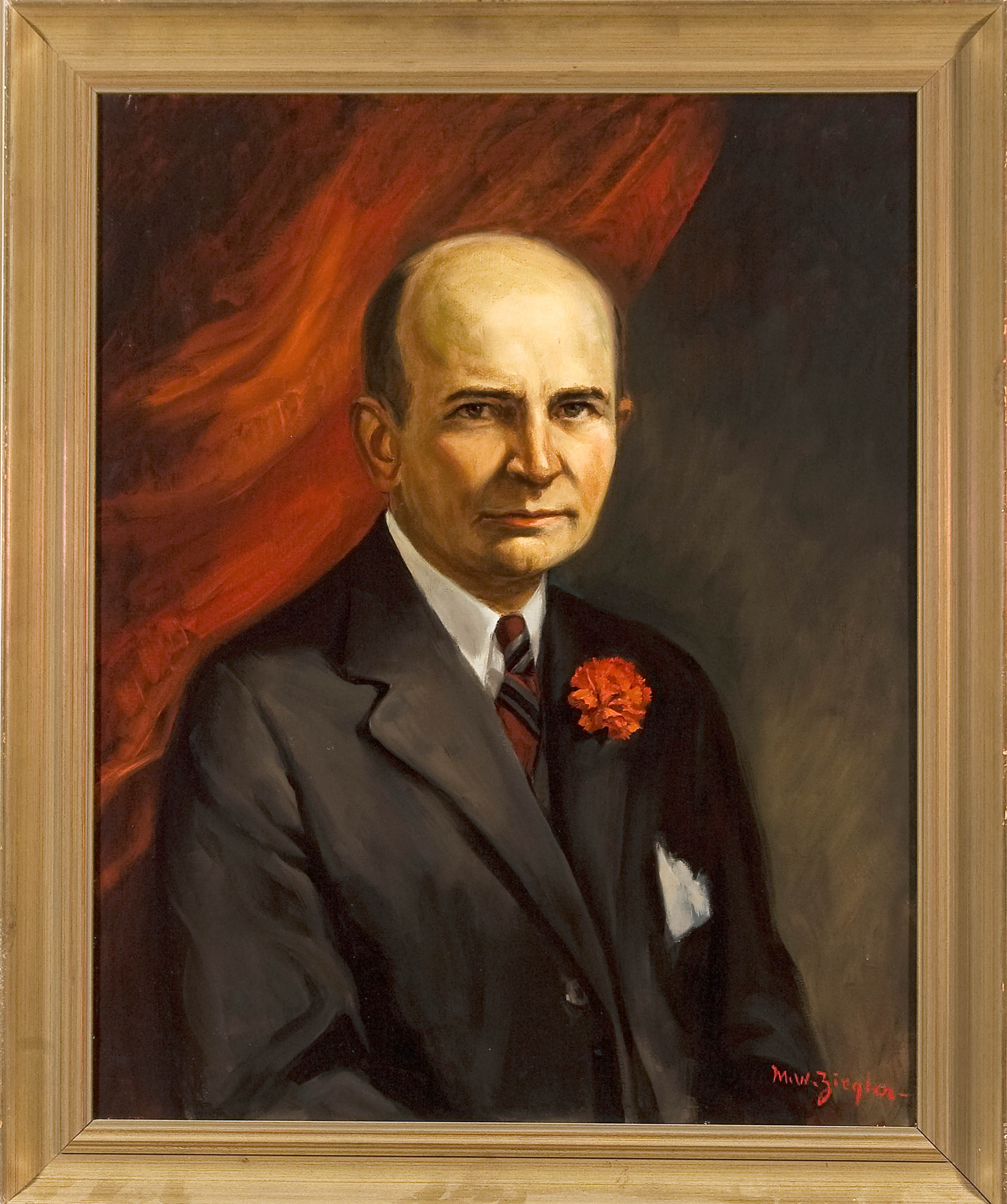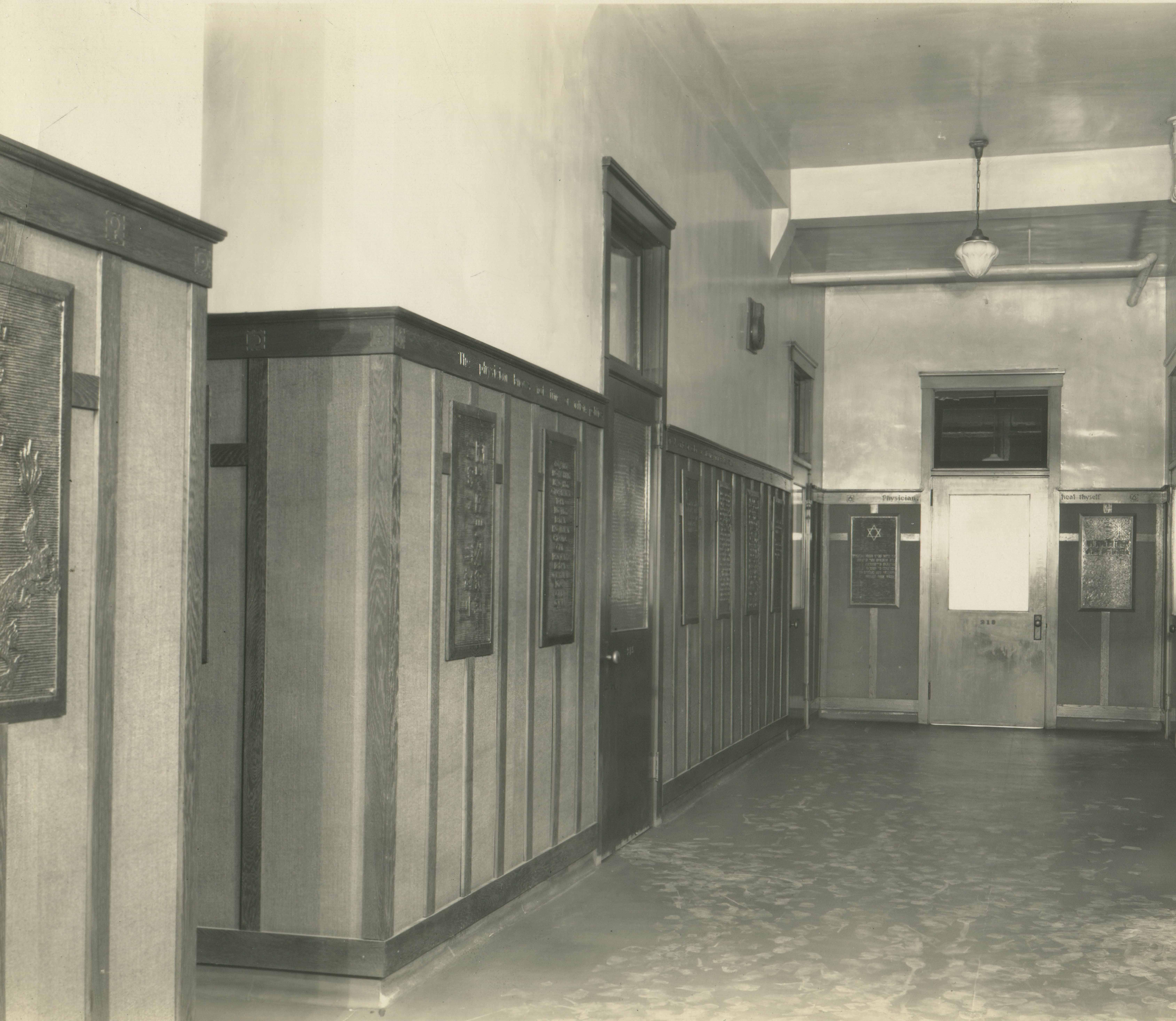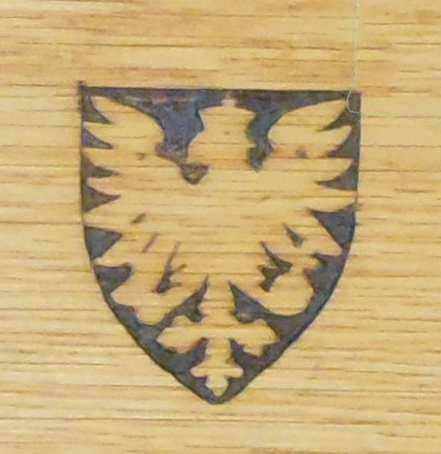By: Nathan Hood
Dr. Martin H. Fischer designed many of the interior, decorative elements in and around his lecture hall located within the University of Cincinnati’s old College of Medicine. The majority of these ornaments were engravings expertly crafted by Dr. Fischer’s technical assistant and friend, Josef Kupka. Mr. Kupka was Dr. Fischer’s assistant for thirty years, from 1912 to 1942. He served Dr. Fischer for the greater part of the former’s active career as a professor of physiology at the University of Cincinnati.
It has been suggested that Dr. Fischer conceived the idea for the engravings after recognizing how the daily quotations he shared with his classes interested and inspired his students. However, the idea was only realized after his place of instruction was moved from the University’s Cunningham Hall to the newly constructed College of Medicine building in 1917.
The hallway of the old Department of Physiology lecture hall and laboratory contained the greatest concentration of engravings. The engravings closest to the floor were plaques with various quotations in different languages. There are fourteen, several of which are as follows (in order, beginning on the left of the hall):
- “Life passes; work remains.” (Japanese)
- “The men of the four seas are brothers.” (Confucius, Chinese)
- “I inquired in all ends and places of the world in order to discover the certain and experienced truths of the arts of medicine; not only of the learned men but also of the barbers, the bathers, learned physicians, old women, black wizards; (I inquired) also regarding the care of the sick of the alchemists, in the monasteries, of the noble and the ignoble, of the wise and the simple.” (Paracelsus, German)
- “Satisfy by thy deeds those who depend upon thee; it is the act of the favored ones of god.” (The Prisse Papyrus, Hieroglyphics)
- “A playful destiny has ordained happiness for all fools because they lack brains and sorrow for all wise men because they possess them.” (Grybojédov, Russian)
- “The Earth is finite but human stupidity is infinite.” (Flaubert, French)
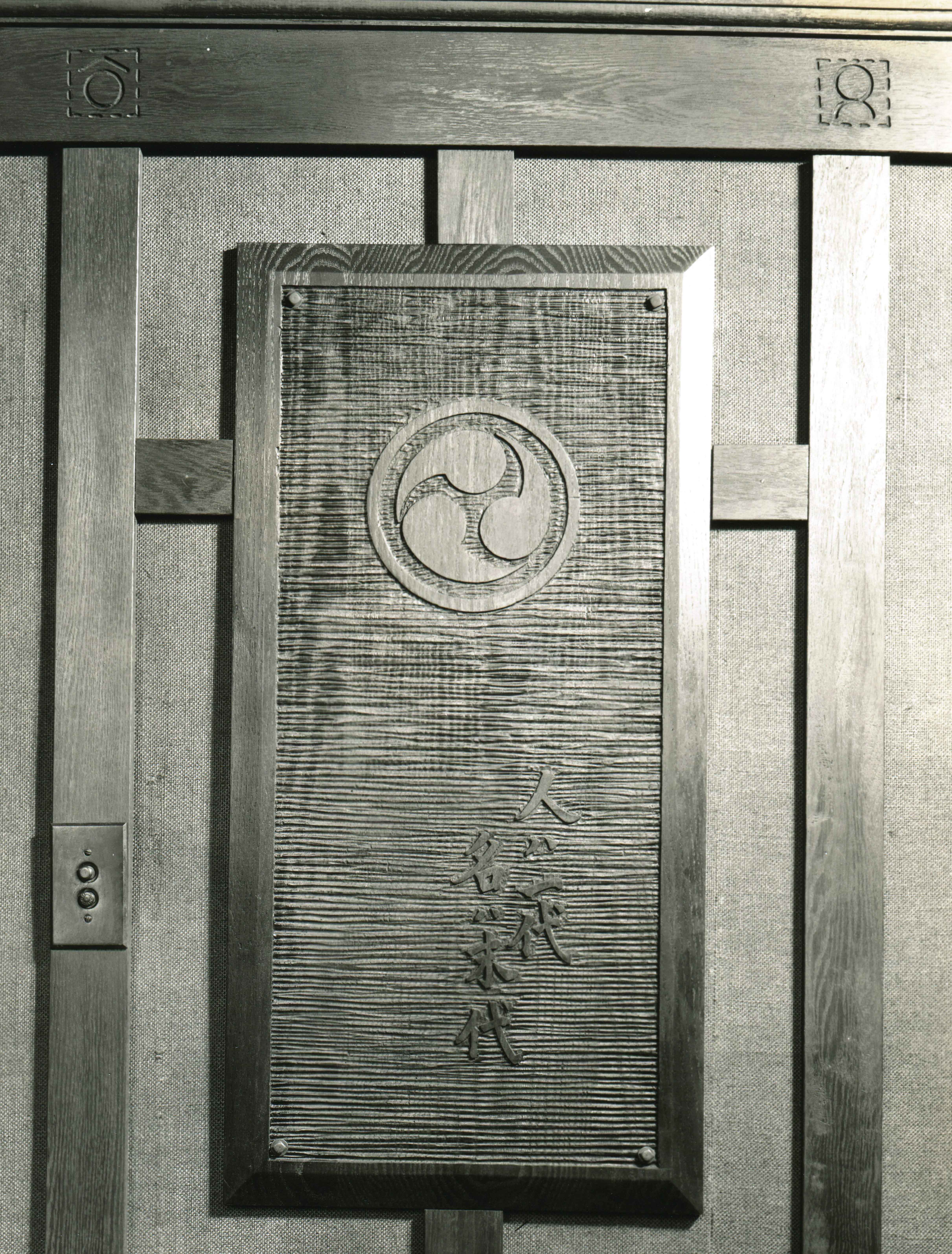
“Life passes; work remains.” The swirl symbol on the plaque is one variation of the Japanese tomoe symbol. This picture serves as a link to more information on the tomoe symbol.
Above the plaques were the ‘running’ inscriptions in English:
- “The physician knows not time or nation, politics, creed, caste or color; a suffering man is his world.”
- “Physician, heal Thyself.” (St. Luke IV, 23.)
- “Languages are the keys to the civilizations; to despise the one is to be ignorant of the other.”
These inscriptions were spaced amongst thirty-one different alchemical symbols. Most of these were referenced from Ida Freund’s The Study of Chemical Composition: An Account of its Method and Historical Development with Illustrative Quotations (1904). The more modern symbols are from Torbern Bergman’s “lists” – perhaps his Dissertation on Elective Attractions (1775).

Two engravings above the plaque for “Life passes; work remains.” The alchemical symbols for Zinc and Cobalt, respectively.
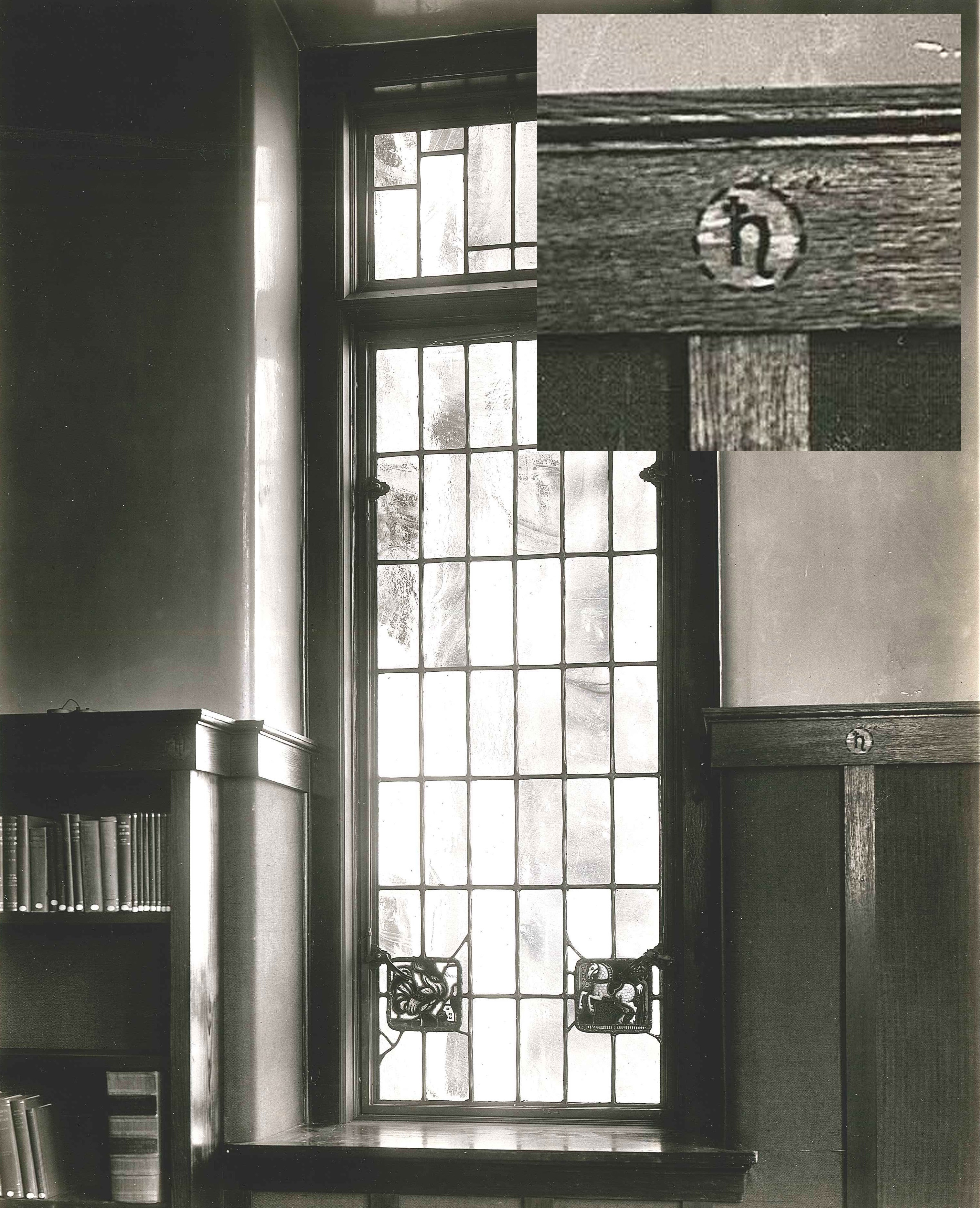
The Roman symbol for Saturn in The Charlotte Fischer Library.
The Charlotte Fischer Library, named after Dr. Fischer’s wife, also displayed engravings. These include the twelve Zodiac symbols and the Roman symbols for Neptune, Uranus, Saturn, Jupiter, and Mars. The library are also has several inscriptions:
- “Here comes one who thinks – differently.”
- “A moment’s thought is worth an hour’s study.”
- “Never read a book about a book; read the book.”
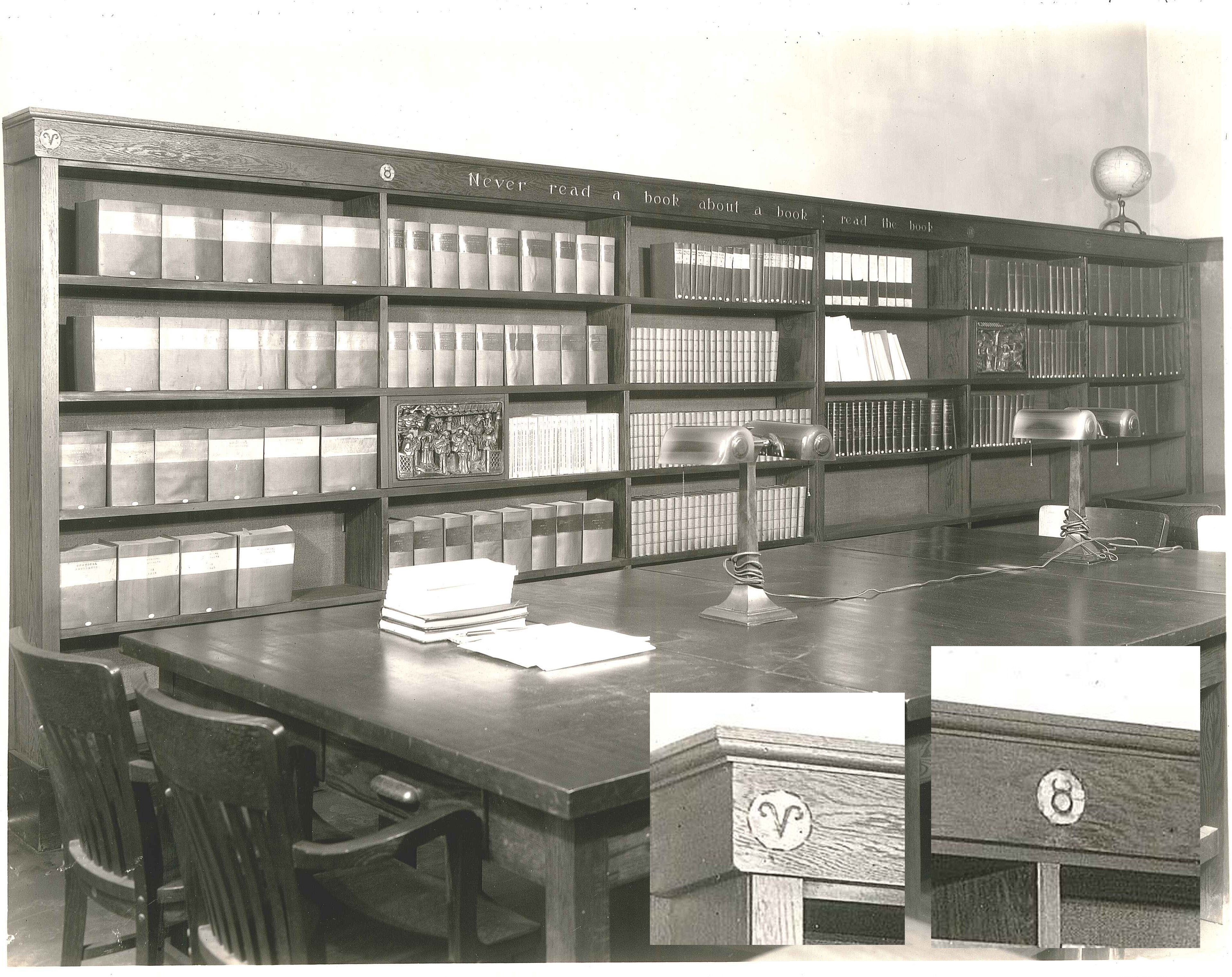
The Charlotte Fischer Library.
Notice the engraved symbols including those for Aries and Taurus, respectively.
The engraving on the bookcase reads: “Never read a book about a book; read the book.”
Engravings also bordered Dr. Fisher’s lecture hall between the stained glass windows and above The Cantagalli Pharmacy. Here, fifty-four significant names in medical history are chronologically listed and separated by medieval or otherwise heraldic images. The sequence begins with “Chin Yueh Jen” and ends with “Morton.” Dr. Fischer later claimed that the Egyptian, Imhotep, should have headed the series and was omitted only because Imhotep’s existence was ‘discovered’ after the border’s completion sometime between 1926 and 1930. (The first published account of Imhotep appeared in 1930.)
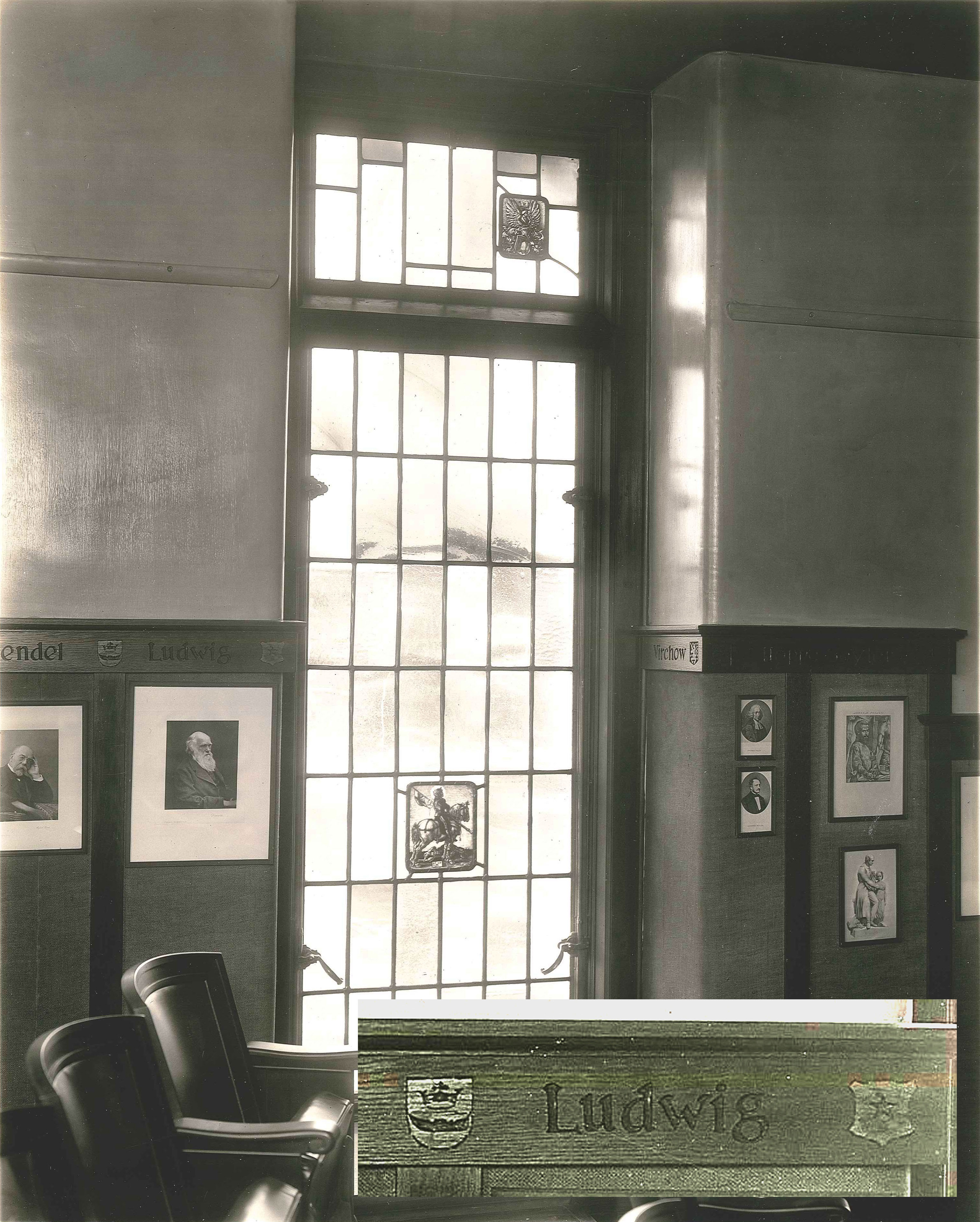
Notice the “frieze” that borders the lecture room.
This picture functions as a link to the blog “The Stained Glass Windows of Dr. Martin H. Fischer’s Lecture Hall.”
There is an inscription above the pharmacy also: “Enter ye into their gates with thanksgiving and into their courts with praise.”
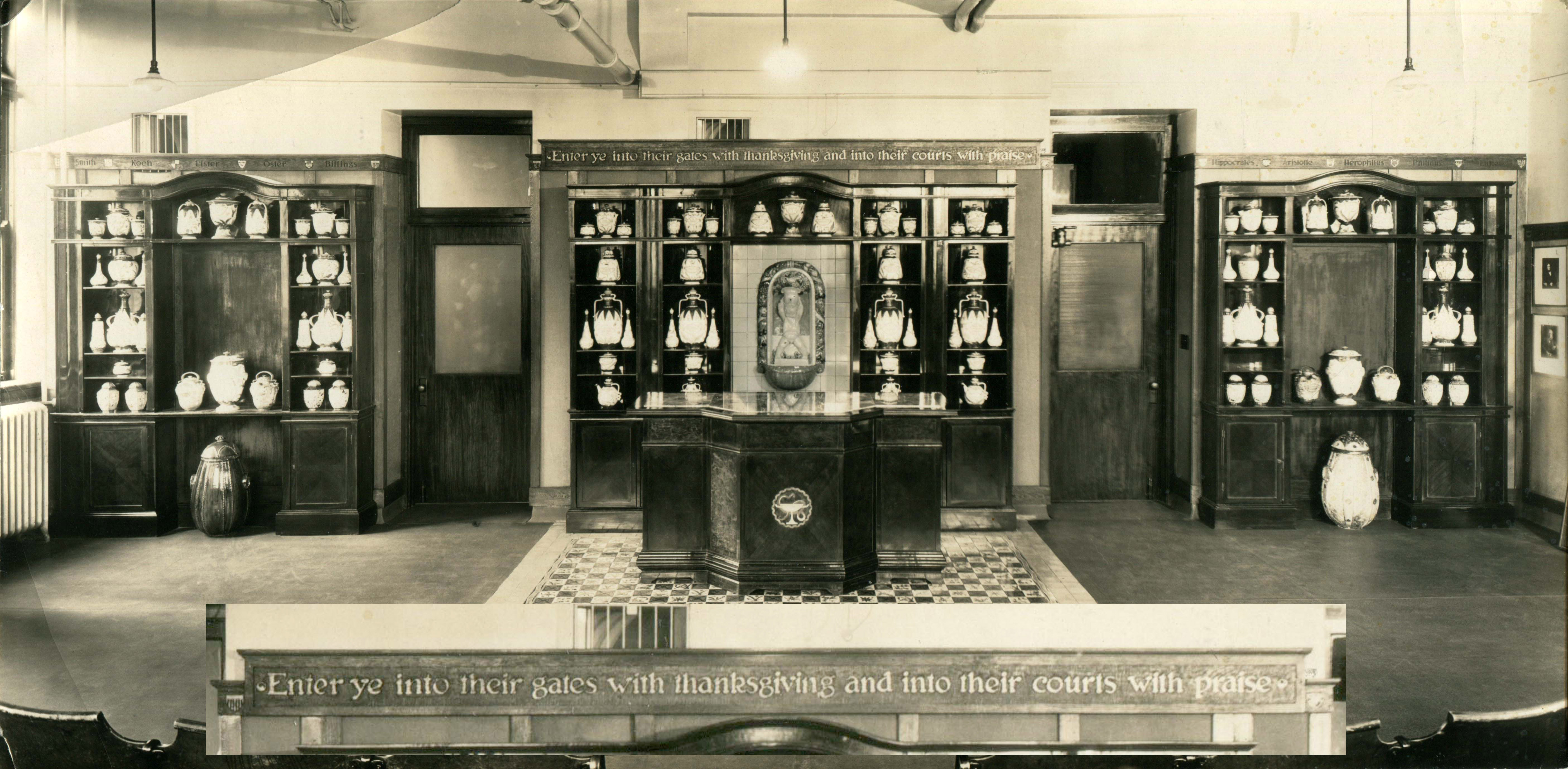
The Cantagalli Pharmacy in Dr. Fischer’s lecture hall. Notice the inscription above.
This picture functions as a link to the blog “Dr. Martin H. Fischer and The Cantagalli Pharmacy.”
Many of these engravings have been preserved for posterity at The Henry R. Winkler Center for the History of the Health Professions. For more information, to view a collection, or for a tour of The Winkler Center, please call 558-5120 or email chhp@uc.edu to schedule an appointment.

